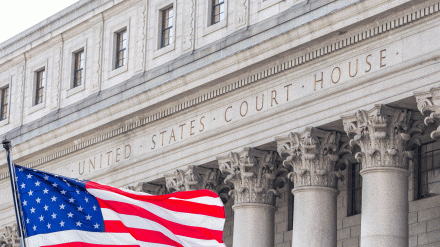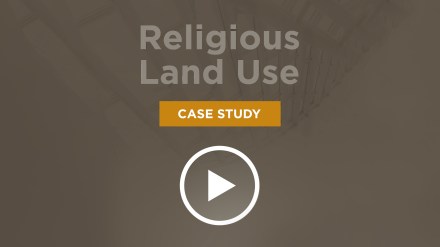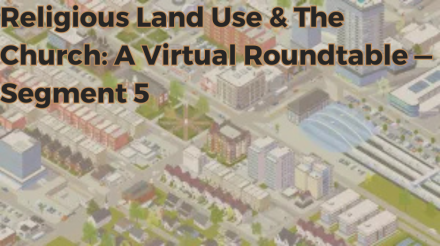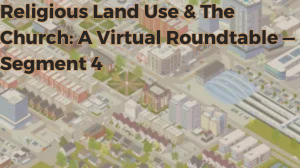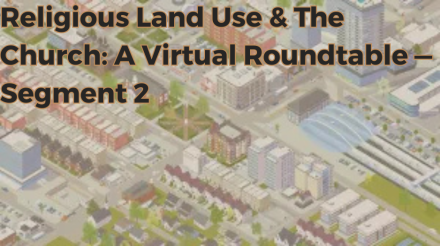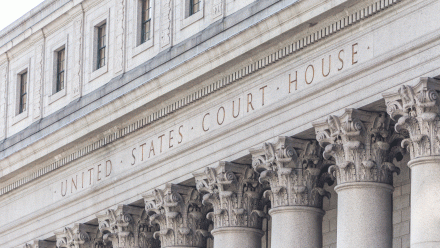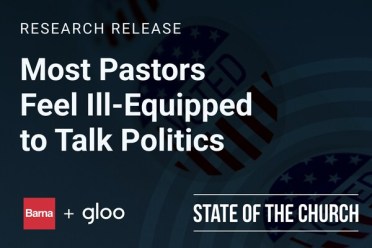The Internal Revenue Service (IRS) says churches enjoy more latitude when it comes to endorsing or opposing political candidates—a surprising development after decades of debate and uncertainty regarding what is and isn’t allowed for tax-exempt organizations under a controversial Internal Revenue Code provision best known as the “Johnson Amendment.”
But uncertainties remain about just how much latitude.
Churches sue the IRS
Two Texas churches and the National Religious Broadcasters sued the agency in August of 2024 regarding the constitutionality of the Johnson Amendment. Previously, President Trump called for its repeal through a 2018 executive order.
Don’t Let Legal Ambiguity Put Your Church at Risk
The IRS may have softened its stance, but the legal landscape remains unclear—and your church’s tax-exempt status could still hang in the balance. As a Church Law & Tax member, you get exclusive access to expert analysis, real-time legal updates, and practical guidance trusted by pastors, church administrators, and attorneys nationwide.
Become a member today and stay legally confident, not legally exposed.
The amendment, adopted in 1954, says tax-exempt organizations—as defined for federal law under section 501(c)(3) of the tax code—may not “participate in, or intervene in (including the publishing or distributing of statements), any political campaign on behalf of (or in opposition to) any candidate for public office.” The amendment also limits the amount of political lobbying conducted by those organizations.
Churches meeting certain criteria are automatically considered tax-exempt under 501(c)(3), and for years, the IRS has contended they fall under the Johnson Amendment’s prohibitions. But religious freedom advocates say the amendment violates the free exercise rights of churches protected by the First Amendment.
The IRS shifts its position
In settling the lawsuit this week, the IRS includes this pronouncement granting churches more latitude with political candidates:
When a house of worship in good faith speaks to its congregation, through its customary channels of communication on matters of faith in connection with religious services, concerning electoral politics viewed through the lens of religious faith, it neither “participate[s]” nor “intervene[s]” in a “political campaign,” within the ordinary meaning of those words.
To “participate” in a political campaign is “to take part” in the political campaign, and to “intervene” in a political campaign is “to interfere with the outcome or course” of the political campaign. . . .
Bona fide communications internal to a house of worship, between the house of worship and its congregation, in connection with religious services, do neither of those things, any more than does a family discussion concerning candidates. Thus, communications from a house of worship to its congregation in connection with religious services through its usual channels of communication on matters of faith do not run afoul of the Johnson Amendment as properly interpreted.
Six observations for pastors and church leaders
Persuasive, but not precedential.
The IRS’s position through the settlement is binding precedent only in the jurisdiction where the lawsuit was filed: the US District Court for the Eastern District of Texas, Tyler Division. Its outcome applies only to the plaintiffs who brought the lawsuit.
However, the IRS position still is considered persuasive nationwide, and a church facing future IRS action that’s inconsistent with that position could use it effectively as an “admission against interest” against the agency, says attorney Frank Sommerville, a longtime senior editorial advisor for Church Law & Tax.
The Internal Revenue Code (IRC) remains unchanged—for now.
As a federal agency, the IRS can change its regulations through a process involving proposed new language, notice, and a period for public comment. Congress also can enact laws revising the tax code. Until one or the other acts, however, the tax code remains unchanged. This means churches and church leaders must remain mindful of the statement’s persuasive value.
Uncertain scope.
The settlement statement emphasizes “(b)ona fide communications internal to a house of worship,” and notes “communications from a house of worship to its congregation in connection with religious services through its usual channels of communication on matters of faith do not run afoul of the Johnson Amendment.”
Communications made during worship services, as well as through printed bulletins and signs and posters within the church’s building, appear safe under the IRS’s settlement statement.
Meanwhile, widespread pamphleteering, signs on church lawns, or roadside billboard advertising using the church’s name and logo would not be safe.
Less certain? Streamed worship services, and articles, audio, and video sent through websites and social media. Sommerville says an important principle is that political speech is only a small part of the communications. He suggests:
- Streaming a church’s worship services in which a discussion of a candidate arises is allowable;
- Less certain would be a church website featuring a prominent political endorsement, or a prominent article on a church’s website endorsing or opposing a candidate;
- Social media posts to an open account endorsing a candidate remain troublesome, while posting to a closed social media account is probably safe; and,
- An email endorsing a candidate from a pastor is probably still prohibited.
CPA Mike Batts, also a longtime senior editorial advisor for Church Law & Tax, notes that the involvement of the National Religious Broadcasters as a plaintiff in the lawsuit appears to help “accommodate the dissemination or broadcast of a church’s religious message to ‘its congregation’ via media (such as television, radio, and internet broadcasts).”
The bottom line: the ambiguity probably sets the stage for future litigation.
IRS publications and advisory materials also remain unchanged.
The IRS’s Publication 1828, Tax Guide for Churches and Religious Organizations still states the IRS’s previous interpretation of the Johnson Amendment. It remains to be seen whether the agency will update the guide or other related materials. Regardless, churches should note that such materials always carry an IRS disclaimer stating they are for informational purposes only and are not considered authoritative.
The IRS is watching–but how closely?
The settlement statement also contends the IRS position regarding churches actually operates consistently with lax IRS enforcement actions against politically active churches. Attorney and Church Law & Tax senior editor Richard Hammar has noted that few churches have lost their tax-exempt status due to political activities policed by the agency.
However, Batts says he has “firsthand knowledge that the IRS has definitively engaged with churches” recently regarding political activities.
Each church must discern how it is called to act.
Churches that feel called to engage in political matters, including opposing or endorsing political candidates, face the same question now as they did before: To what extent do they wish to pursue such activities, vis-a-vis the possible threat to their tax-exempt statuses?
With the settlement statement, the threat of losing tax-exempt status may have lessened. But the extent of activities permissible in the eyes of the IRS is uncertain, leaving churches to decide how far to go with politically related activities.
Stay Ahead of Church Law Changes
Get the latest legal updates, IRS developments, and expert guidance delivered straight to your inbox.


